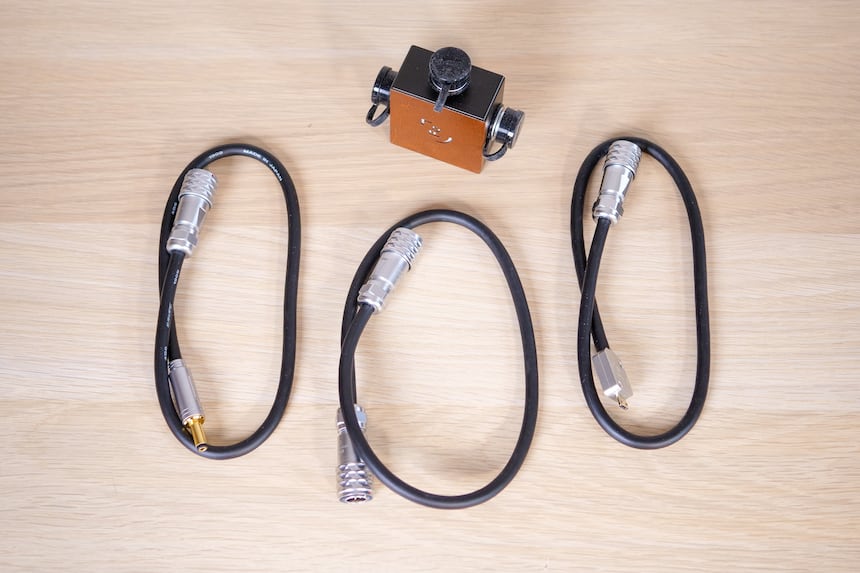The Ferrum brand has been around for just over two years. It methodically markets one product after the other, ensuring that they address a wide variety of niches. It’s part of the Polish group HEM, which collaborates with Mytek for certain circuit boards. You’ll notice a slight family resemblance on the back of the device.
Ferrum started with Hypsos, a configurable external power supply. This electrical unit delivers the necessary voltage to one or more devices, which is all configured via its front panel display. The brand then followed this with the analogue OOR headphone amp. These first two products both received an EISA Award—an impressive feat for such a young company. Ferrum’s third device is called Erco, a headphone amp with an integrated DAC.
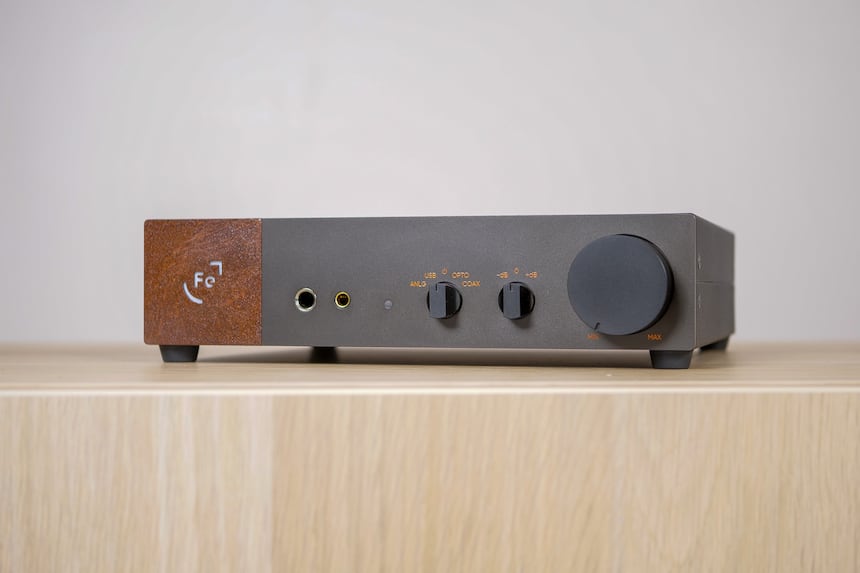
Overview of the Ferrum Erco
The Ferrum Erco features a half-width chassis (that is, half the size of a regular 42cm Hi-Fi unit). It has an understated look thanks to the black case that rests on four thick rubber feet and the brand’s simple backlit logo on the left-hand side of the front panel. The area surrounding the logo has a rusty quality, both in terms of colour and visual appearance.
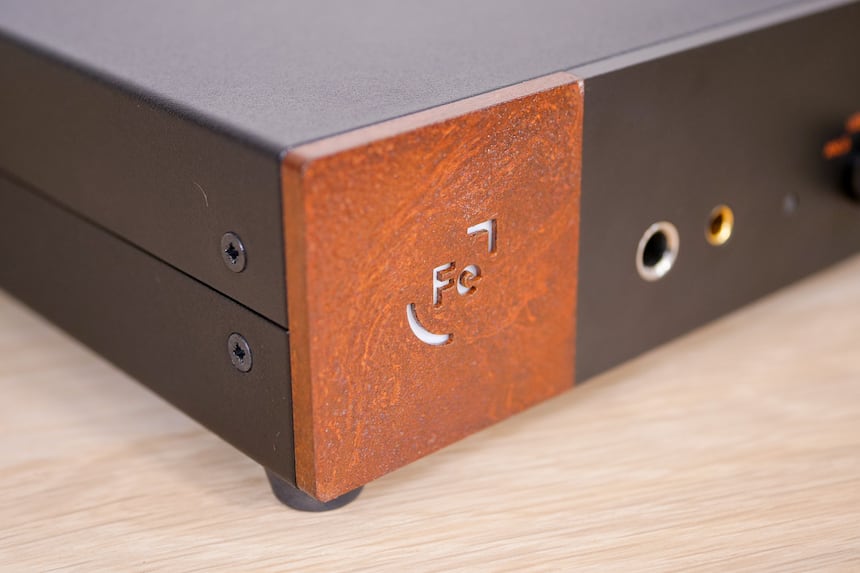
The volume control is located on the right-hand side of the front panel. Made of metal, it has a pleasant, clean feel to it, no tricks. There’s no digital display to indicate the volume; instead, this is indicated by a small notch on the control. The button is also mechanical and isn’t intended to be operated by a remote control—a logical choice for use in headphone amp mode.
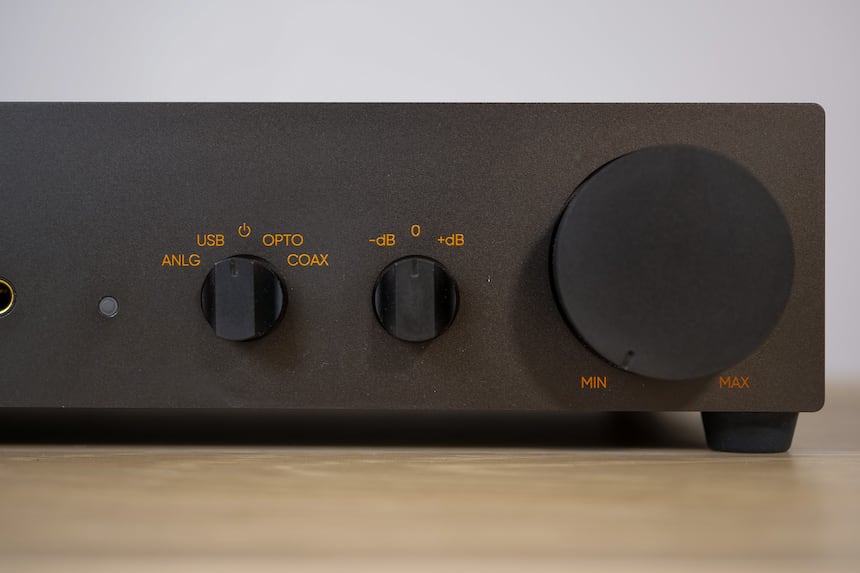
Two small rotary switches complete the selection of available controls. The one closest to the volume increases or decreases the gain to best match the output level to the headphones being used. Next to it is the switch that selects the source. To switch the Erco off, this switch needs to be turned to the central position.
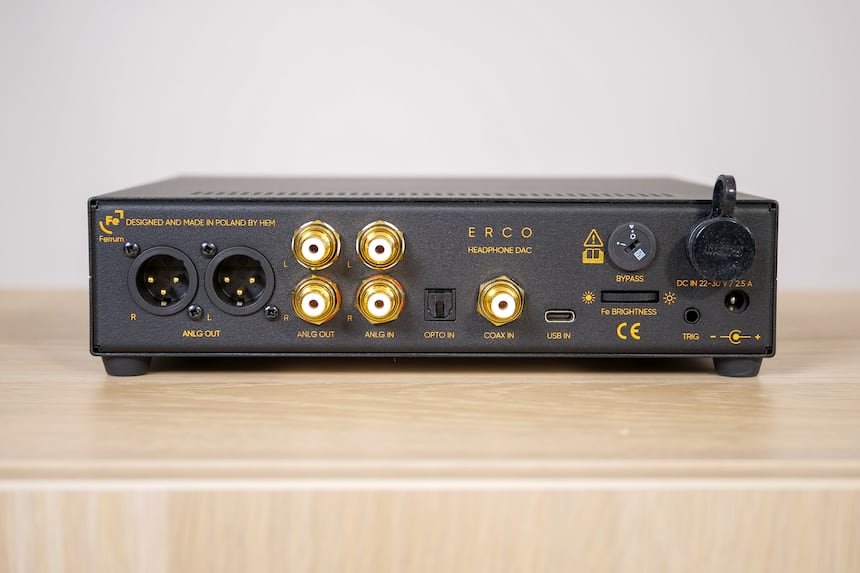
There are four inputs. Firstly, there’s the analogue RCA input that will connect just about any source. In the absence of a record player, you’ll need a phono preamp. The three other inputs are digital: optical, coaxial and USB (more specifically, a USB-C, which is more practical and durable than a USB-B).
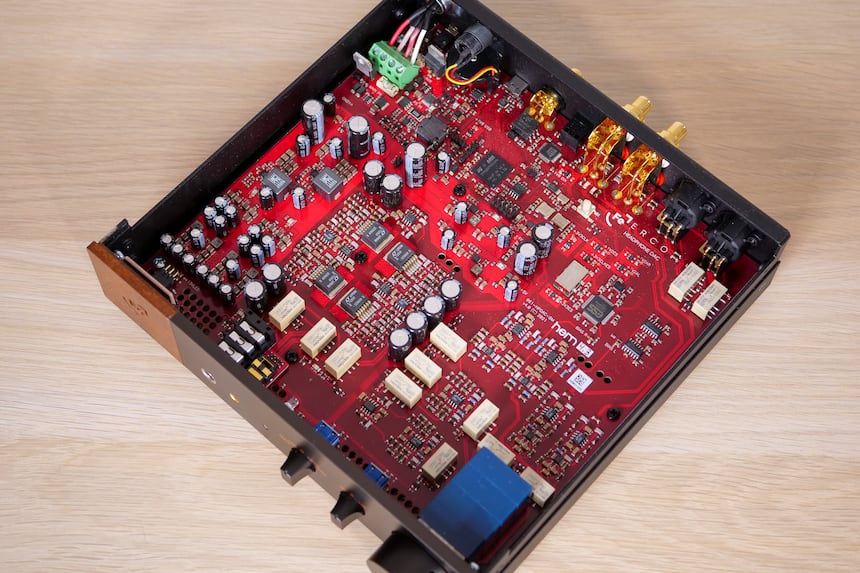
The digital-to-analogue conversion is handled by an ESS Sabre ES9028PRO chip. Inside, the single circuit board handles all the functions and the power supply, and its performance is exemplary. As far as power is concerned, the Erco comes with a standard 24-volt external power supply.
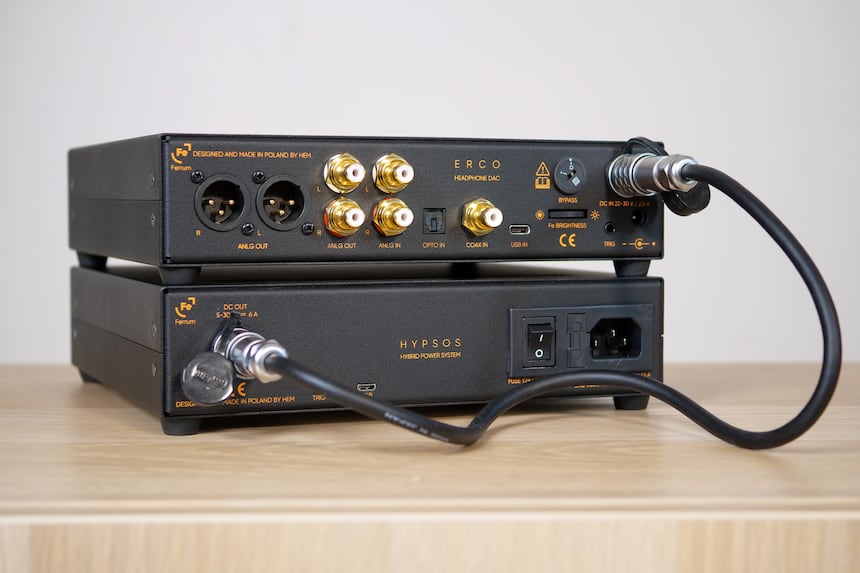
Ferrum also gives audiophiles the option of replacing this with its Hypsos power supply, which has the same aesthetically pleasing case as the Erco. Should you choose this option, you’ll need a 4-pin power link connector (included). Other kinds of cables are included to supply equipment from other manufacturers. There’s also a splitter to power two devices simultaneously, though, of course, these must both use the same input voltage.
Using the Ferrum Erco
The Ferrum Erco can operate in three different configurations, and it can even carry out all three at once. We’ll start with the most obvious one: wired headphone amplification. Two outputs are provided on the front panel: a 6.5mm unbalanced and a 4.4mm balanced. These are powerful enough to support just about any headphone on the market. For example, the Erco can output up to 6.1 watts under 50 ohms in balanced connection.
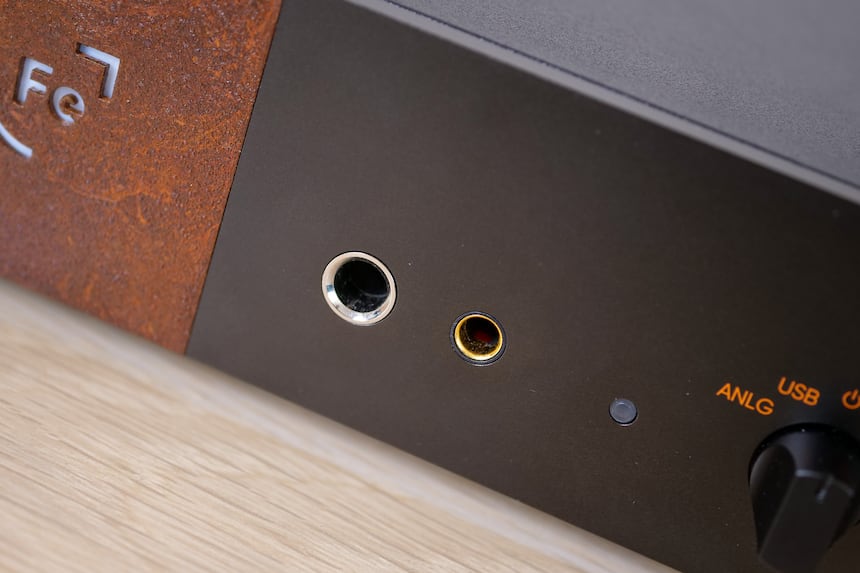
When used with headphones, there are four sources to choose from. Either the digital/analogue conversion will be done by another DAC upstream, or the Erco will do it. It scales up to 384 kHz Hi-Res and 32-bit, or DSD256. However, the Erco can also function solely as a DAC. In this case, the analogue output can be configured as variable or fixed via a rear panel switch.
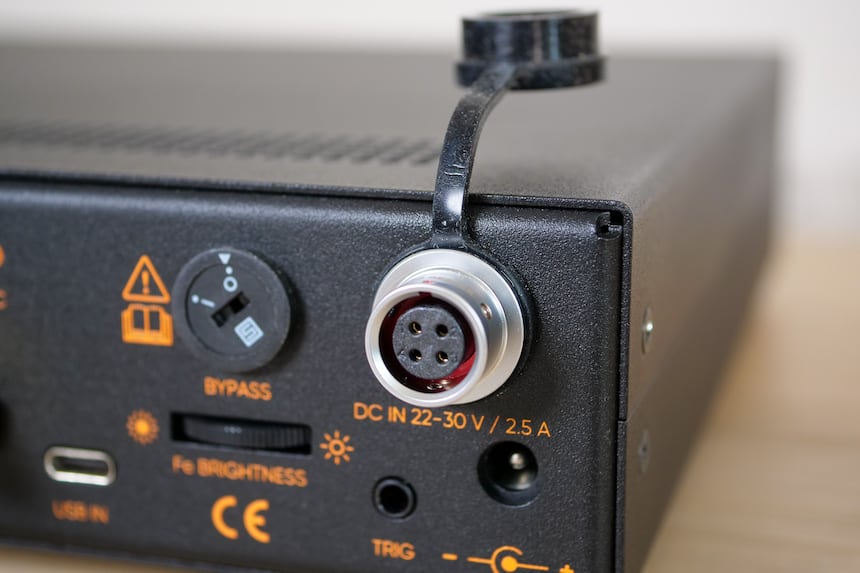
Aside from being used with headphones, the Erco also acts as a DAC/preamp if the volume is set to variable mode. It can feed a power amp or powered speakers, unbalanced or balanced, whilst allowing for the selection of up to four sources. If you maximise its use within one system, the Erco acts as a headphone amp, a DAC and a preamp all rolled into one.
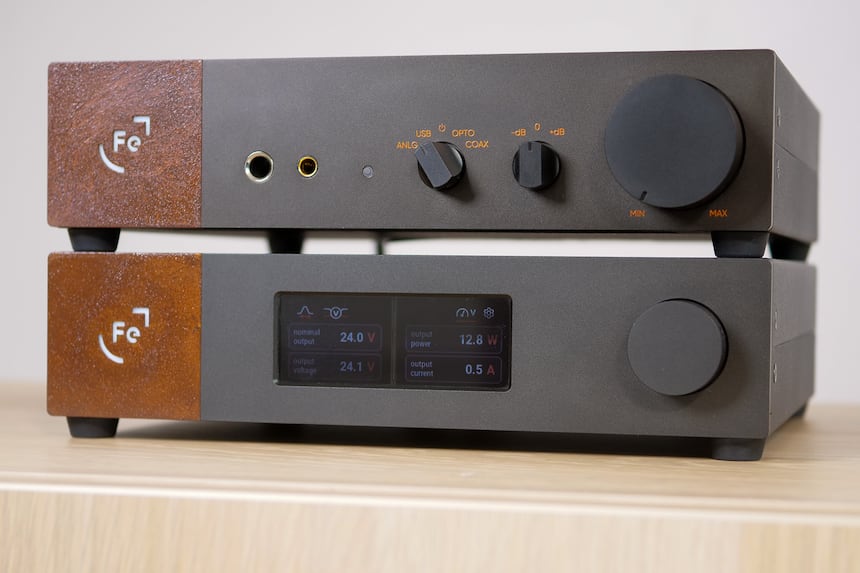
If you connect the Hypsos external power supply, it then controls the Erco’s on/off function. The front of the Hypsos power supply features a volume controller and a colour display. The latter is used to display the selected voltage and the power being used. This optional power supply aims to maximise the Erco’s performance by providing the cleanest possible current.
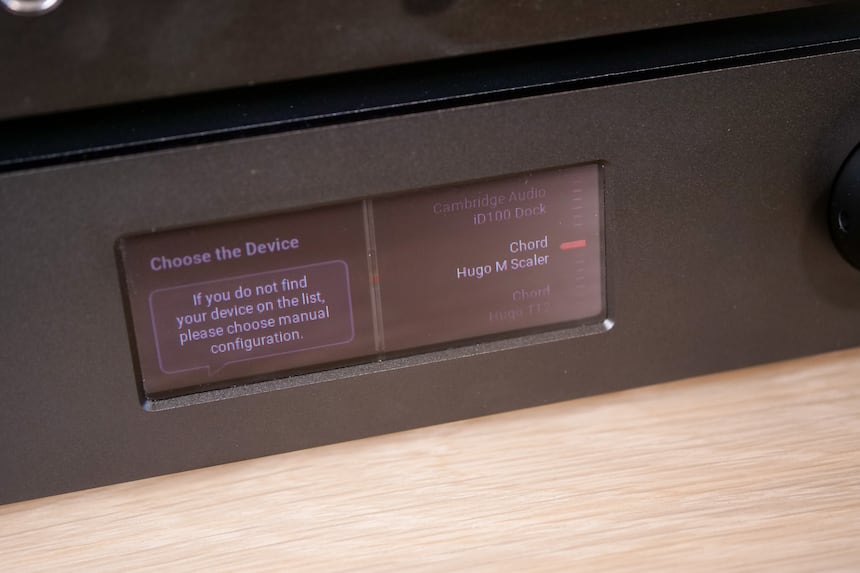
The front panel display is also used to select the output voltage. Ferrum has integrated an extensive list of hardware from a variety of manufacturers. Simply select your device, and the Hypsos will auto-configure to the correct output voltage. It’s also possible to switch to manual mode and fine-tune to the level you want. Each time, the voltage to be applied is checked before the device is completely switched on, leaving time to switch it off in case of an error.
Listening Experience
We connected several types of headphones to the Ferrum Erco: open, closed, dynamic, and planar. We also connected it to our SPL s800 class AB power amp and our Dynaudio Special Forty speakers. The listening test was carried out in two phases: one with the Hypsos power supply and one without.
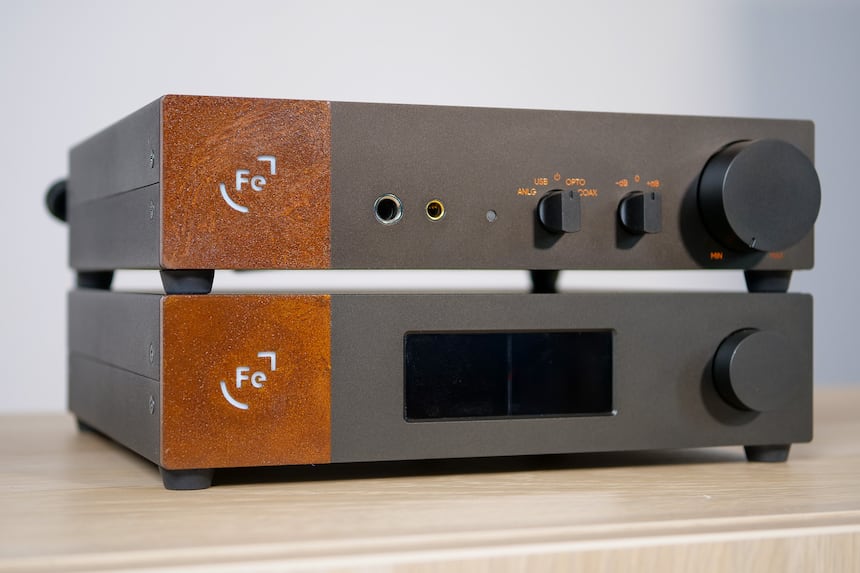
We started with Eric Reed’s jazz trio and his album Black, Brown and Blue - a smooth listen. The sound of the brush on the snare drum is strikingly realistic; you’d be forgiven for thinking the drummer was right there in front of you. The dynamics and feel of the piano are also exquisitely reproduced, to the point that you can even sense the pressure on the keys. Plus, the resulting sound is free from the crackling effect that often plagues the systems that have trouble reproducing this instrument. Transparency is one of the Ferrum Erco’s strong points; everything is reproduced exactly as it should be, and the individual characteristics of each headphone are beautifully highlighted.
Listening to Yazmin Lacey’s album Voice Notes reveals the Ferrum Erco’s full capabilities as a DAC, with a seemingly limitless exploration of micro-details reproducing echo and reverb effects. This creates the illusion of space, figuratively pushing the headphones back a foot or so. The Ferrum Erco is also meticulously precise, never indulging in the unnecessary and producing a clear sound even in the lowest frequencies, something we were able to verify with the electro album Remember by Weval. Don’t expect the Erco to add its own signature sound or a bit of extra bass—that’s not what it’s here for.
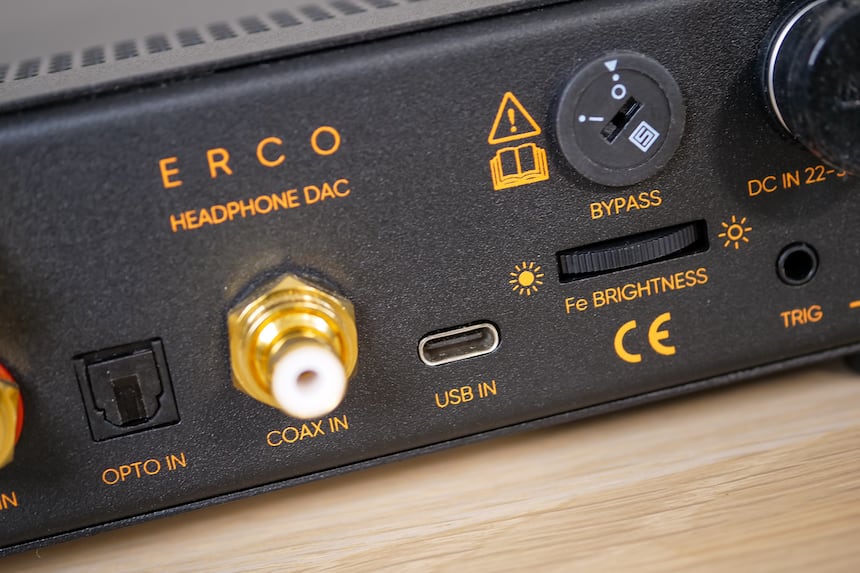
We then did the same tests with the Hypsos power supply connected. When reproducing classical music such as Mahler’s Symphony No. 4 by the London Philharmonic Orchestra, the Erco respects the silences as well as the different layers within the sound stage. The sound is perfectly placed and has a great depth effect, something which the external power supply only enhances. It magnifies the music in the most natural way possible, neither adding nor changing anything. The Hypsos certainly makes a difference to the listening experience. The music seems to leave the confines of the ear and dance all around the room, even if you’re wearing closed headphones. There’s a clear gain in authenticity, openness and phrasing.
Finally, after disconnecting the headphones, we switched to DAC/preamp mode and listened through our speakers. Again, the addition of the Hypsos power supply greatly improved the result. So much so that once it’s plugged in, there’s no turning back. We found the same beautiful transparency and full sound stage that made us forget the speakers were even there. The Erco delivers exactly what you’d expect in terms of respecting tone, dynamics and instrumental placement. This makes selecting the speakers even easier, as the Erco will express the specific characteristics of each one.
